Maximising your online visibility - an essential guide
Maximising Online Visibility: A Guide for Businesses

In today's digital age, establishing a robust online presence is crucial for businesses, professionals, and brands looking to engage with their audience, enhance their market reach, and drive growth.
With the proliferation of the internet and social media platforms, it's more important than ever to utilise strategic methods to maximise online visibility.
Let's look at some essential strategies and tips to help you effectively enhance your presence online.
1. Understand Your Audience
Gaining a deep understanding of your audience is fundamental to crafting an effective digital strategy. Knowing who your audience is, beyond just surface-level demographics, allows you to create content and campaigns that resonate, engage, and convert.
Here’s how you can more understand your audience and leverage this insight for maximising your online visibility:
1. Demographic Analysis
Start by collecting basic demographic data such as age, gender, occupation, and geographical location. This information forms the foundation of your audience profile. Tools like Google Analytics provide a wealth of data on who visits your website, including their age groups, gender, interests, and even the devices they use to access your site. Social media platforms also offer detailed insights into your followers' demographics and how they interact with your content.
2. Psychographic Segmentation
While demographics explain "who" your audience is, psychographics tell you "why" they may be interested in your products or services. This involves understanding your audience’s lifestyle, values, attitudes, and interests. Conduct surveys, gather feedback, and engage in social listening to learn what drives your audience. Are they environmentally conscious? Do they value high-quality, artisan products? Understanding these aspects can significantly tailor your marketing approach.
3. Behavioural Insights
Behavioural data provides concrete insights into how your audience interacts with your brand. Analyse user behaviour on your website and social media platforms to see which content they consume most, the path they take on your website, and what actions they perform, such as filling out a form or making a purchase. Tools like Google Analytics’ Behaviour Flow and heatmapping software like Hotjar can show you what’s working and what’s not.
4. Customer Journey Mapping
Mapping out the customer journey helps you understand the different stages your audience goes through before converting. From initial awareness to the decision-making process and finally to the purchase stage, understanding these steps can help you craft messages suited for each stage. This tailored approach ensures that you meet potential customers exactly where they are in their journey.
5. Utilise Social Media Analytics
Social media platforms are goldmines of audience data. Analyse which posts generate the most engagement, track comments, shares, and likes, and notice the type of content that resonates with your audience. This can inform not only your social media strategy but your broader content strategy as well.
6. Segmentation and Personalisation
Once you have a thorough understanding of your audience, segment them into smaller groups based on shared characteristics. This allows for more targeted and personalised marketing efforts. Personalisation can dramatically increase the effectiveness of your campaigns by catering to the specific needs, preferences, and behaviours of each segment.
7. Feedback Loops
Create mechanisms for ongoing feedback from your audience. Whether through direct surveys, comment sections on your blog, or social media interactions, regularly solicit feedback to refine your understanding of your audience. This continuous loop of feedback and adaptation keeps your strategies aligned with audience preferences and emerging trends.
Understanding your audience isn't a one-time task—it's an ongoing effort that requires constant tuning and adaptation. By combining demographic, psychographic, and behavioural data, you can create a comprehensive audience profile that drives more effective and targeted marketing strategies. This deep understanding not only enhances your online visibility but also strengthens your overall digital presence, leading to better engagement, higher conversion rates, and sustained business growth.
2. Content Marketing: The Engine of Digital Marketing
Content marketing stands at the core of digital engagement, acting as a powerful tool to attract, engage, and retain customers by creating and sharing valuable, relevant, and consistent content.
It helps establish your brand as an authoritative voice in your industry, building trust and credibility with your audience.
Here are the main roles and approaches of effective content marketing.
Role of Content Marketing
Educate Your Audience: High-quality content offers real value by educating your audience about industry developments, solutions to their problems, and helpful tips, all of which position your brand as a helpful resource.
Build Brand Awareness: Consistent content creation increases your brand’s visibility online. Every piece of content you publish is an opportunity to connect with new and existing customers, making them more likely to turn to you when they need your products or services.
Drive Organic Search Traffic: Content is a fundamental element of SEO. By optimising content with targeted keywords, you can improve your visibility in search engine results, driving more organic traffic to your site.
Generate Leads: By offering valuable content, you can encourage visitors to provide their contact information in exchange for downloadable content, webinars, tutorials, etc., effectively generating leads.
Enhance Engagement and Retention: Engaging content not only attracts new customers but also helps in retaining existing ones by keeping them interested and engaged with your brand over time.
Developing a Content Strategy
1. Blogging:
Blogs are a versatile platform for sharing a wide range of content—from detailed articles and interviews to industry news and company updates. Ensure that your blog posts are optimised for search engines with appropriate keywords, meta descriptions, and titles. Regularly updated blogs not only help improve SEO but also provide fresh content for your audience to consume.
2. Video Content:
Video is one of the most engaging forms of content. From tutorials and behind-the-scenes insights to customer testimonials and product demos, videos can capture attention more effectively than most other content types. They are shareable across multiple platforms, including social media, your website, and YouTube, enhancing your reach and engagement.
3. Infographics:
Infographics allow you to present complex data in a visually appealing format that is easy to understand and share. They are particularly useful for summarising research, providing quick tips, or explaining how something works. Ensure your infographics are well-designed and include your brand logo to increase brand recognition.
4. Podcasts:
Podcasts are an excellent way to reach your audience through a more personal medium. They're ideal for in-depth discussions, interviews, and storytelling. By focusing on topics of interest to your target audience, podcasts can build a loyal listener base that looks forward to each new episode.
Content Distribution and Promotion
SEO: Ensure all content is SEO-optimised to rank higher in search engine results pages (SERPs). This involves using the right keywords, creating meta tags, and building backlinks to your content.
Social Media: Share and promote your content across social media platforms where your target audience is most active. Use engaging descriptions and encourage followers to share your posts.
Email Marketing: Use email newsletters to distribute content directly to your subscribers. Segment your email list to tailor content to different user groups for higher engagement.
Partnerships: Collaborate with other brands or influencers in your industry to reach wider audiences. Co-created content or cross-promotion can be highly effective in reaching new potential customers.
Effective content marketing is not just about producing content; it’s about creating meaningful interactions that educate and engage your audience, thus building a long-lasting relationship. By diversifying your content strategy to include various formats and optimizing the distribution, you can significantly enhance your digital presence and achieve sustained success in your marketing efforts.

3. Social Media Marketing: Enhancing Engagement
Social media has revolutionised the way businesses interact with their customers.
By effectively leveraging social media platforms, businesses can significantly enhance their visibility and foster deeper connections with their audience.
Here are the main benefits of social media marketing and some strategic insights on how to implement it effectively.
Benefits of Social Media Marketing
1. Increased Brand Awareness:
Social media platforms offer vast exposure due to their widespread use. By consistently posting engaging content, companies can increase their brand recognition and recall. Every post shared by a follower introduces the brand to a new network of individuals, which can lead to more people visiting your page and learning about your business.
2. Enhanced Customer Engagement:
Social media provides a unique opportunity to interact directly with customers and prospects. Engaging with users through comments, messages, and posts can create a sense of community and loyalty around a brand. This direct interaction not only enhances customer relationships but also boosts customer satisfaction and retention.
3. Cost-Effective Advertising:
Social media platforms offer advanced but affordable advertising options that allow businesses to reach a large audience at a lower cost compared to traditional media. With precise targeting features based on demographics, interests, and behaviors, social media ads can effectively reach potential customers who are likely to be interested in your products or services.
4. Increased Website Traffic:
Social media can be a powerful driver of traffic to your website. By sharing compelling content that includes links to your website, you can encourage followers to learn more about your offerings, read your blog posts, or check out your products.
5. Valuable Insights and Feedback:
Social media platforms provide immediate feedback on your content through likes, comments, and shares. Moreover, analytics tools enable you to track the performance of your posts and ads, giving you valuable insights into user engagement and preferences.
Implementing Effective Social Media Marketing
1. Choosing the Right Platforms:
Not all social media platforms will be suitable for every business. Choose platforms that best align with the demographics of your target audience. For example, LinkedIn is excellent for B2B companies, Instagram works well for brands with visual products, and TikTok appeals to a younger demographic.
2. Developing a Consistent Posting Schedule:
Consistency is key in keeping your audience engaged. Develop a content calendar to ensure regular posting on each of your platforms. This helps maintain your presence in users’ feeds and keeps your audience looking forward to your next update.
3. Crafting Engaging Content:
Create content that resonates with your audience and encourages interaction. This might include educational posts, entertaining videos, compelling infographics, or inspirational stories. Each piece of content should be crafted with the platform in mind, optimizing for the unique preferences of users on that platform.
4. Interactive Engagement:
Actively engage with your audience by responding to comments, participating in conversations, and acknowledging user-generated content. This helps build a community and shows that your brand values its customers and their opinions.
5. Utilising Social Media Ads:
Leverage the advertising tools provided by social media platforms to extend your reach beyond your current followers. These tools offer advanced targeting options, allowing you to tailor your advertising strategies based on specific business goals, such as increasing brand exposure, driving traffic, or generating leads.
6. Monitoring and Adjusting:
Use analytics tools to monitor the effectiveness of your social media strategies and make adjustments as needed. Look at metrics like engagement rates, click-through rates, and conversion rates to understand what's working and what isn't. This data-driven approach will help you refine your tactics and improve your overall strategy.
Social media marketing offers a plethora of benefits that can transform your business dynamics. It not only enhances visibility and fosters customer engagement but also provides a cost-effective channel for targeted advertising and valuable insights. By strategically implementing and continuously optimizing your social media strategies, you can achieve substantial growth and strengthen your brand's online presence.
4. Email Marketing: A Direct line to Customer Engagement
Email marketing stands as one of the most potent tools in a digital marketer's arsenal, offering unparalleled reach to an engaged audience. Its effectiveness and direct nature make it a preferred method for personal communication and targeted marketing.
Below are some of the reasons behind its effectiveness and outline best practices for successful execution.
Effectiveness of Email Marketing
1. Direct and Personalized Communication:
Email allows you to reach your audience directly in their inboxes, bypassing the noise of social media. This direct line fosters a more personal connection because you can tailor messages to meet the interests and needs of each subscriber.
2. High Return on Investment:
According to various studies, email marketing often boasts a high return on investment (ROI). For every dollar spent, email marketing can return around $42 (according to a 2019 DMA report), making it one of the most cost-effective marketing tools available.
3. Measurable Results:
Every aspect of email marketing can be tracked and analyzed. With the right tools, marketers can track open rates, click-through rates, conversion rates, and even ROI. This data is invaluable for understanding the effectiveness of each campaign and optimizing future efforts.
4. Increased Reach and Frequency:
Email marketing allows you to send messages at a frequency that is difficult to achieve with other marketing forms without becoming invasive. Regular updates keep your brand at the forefront of customers' minds without the additional cost of repeated ad placements.
5. Long-term Relationship Building:
Regular, relevant email communication can help build a long-term relationship with customers. It keeps them informed and engaged with your brand over time, fostering loyalty and encouraging repeat business.
Execution of Effective Email Marketing
1. Building an Email List:
The first step in email marketing is building a list of subscribers who have opted in to receive emails from you. Encourage website visitors to sign up for your mailing list by offering value in return, such as exclusive discounts, early access to products, or valuable information and insights.
- Website Sign-ups: Place email signup forms prominently on your website. Consider using pop-ups, sidebar forms, or embedding a signup form in the footer.
- Content Offers: Provide valuable resources like eBooks, whitepapers, or webinars in exchange for email addresses.
- Checkout Process: Incorporate an email subscription option during the checkout process for customers making purchases.
2. Segmenting Your Audience:
Segmentation is key to personalizing your email campaigns. By dividing your email list based on demographics, purchase history, or engagement levels, you can tailor your messages to better meet the needs and interests of different groups.
- Demographic Segmentation: Tailor your content based on age, location, job title, etc.
- Behavioral Segmentation: Send targeted offers based on past purchase behavior or interaction with previous emails.
- Engagement Segmentation: Adjust the frequency of emails based on how often subscribers open or click through previous emails.
3. Creating Tailored Content:
Once you have segmented your audience, create content that appeals directly to each group. This could include personalized product recommendations, updates related to their interests, or special offers that align with their behavior patterns.
4. Utilizing Automation:
Email automation tools can help you send timely and relevant emails to individuals at critical points in their customer journey. For example, send a welcome email when someone joins your list, a birthday discount, or follow-up emails after a purchase.
5. Testing and Optimization:
Continuously test different aspects of your email campaigns to find what works best. A/B testing can be employed to compare different versions of email subject lines, content, and calls to action. Use the insights gained from these tests to refine your approach.
Email marketing's effectiveness is undeniable, offering a direct, personal, and cost-effective way to communicate with your audience. By building a robust email list, segmenting your audience, personalizing content, utilizing automation, and continuously optimizing your campaigns, you can maximize engagement and achieve significant returns from your email marketing efforts.
5. Pay-Per-Click (PPC) Advertising:
Pay-Per-Click (PPC) advertising is a crucial component of digital marketing strategies, offering a fast and effective way to drive targeted traffic to your website.
By allowing advertisers to bid on the placement of their ads in a search engine's sponsored links, PPC provides immediate exposure and can lead to quick conversions.
Here’s a detailed look at the benefits of PPC advertising and how to execute it effectively.
Benefits of PPC Advertising
1. Immediate Traffic:
Unlike organic search strategies, which can take months to yield results, PPC campaigns can drive traffic to your site as soon as they go live. This immediate influx of visitors is particularly beneficial for new websites or those looking to boost traffic during specific marketing campaigns or events.
2. Highly Targeted Audience:
PPC allows you to target your audience with precision. You can choose to display your ads based on various factors including geographic location, language, device, time of day, and day of the week. Furthermore, by targeting specific keywords related to your business, you can attract visitors who are already interested in what you offer.
3. Budget Control:
With PPC, you have complete control over your budget. You can decide exactly how much you want to spend per day, and you can adjust this amount at any time. This makes PPC advertising scalable and accessible for businesses of all sizes.
4. Measurable Results:
PPC campaigns provide detailed metrics that allow you to see exactly what you are getting out of your investment. Platforms like Google Ads and Bing Ads offer analytics that show you the number of impressions, clicks, conversion rates, and more, enabling you to measure the effectiveness of your ads precisely.
5. Enhances SEO Strategies:
While PPC does not directly affect SEO rankings, insights gained from your PPC campaigns can be invaluable for SEO. By determining which keywords drive the most conversions, you can better optimize your SEO efforts to target similar terms and strategies.
Execution of Effective PPC Advertising
1. Define Your Goals:
Before launching a PPC campaign, clearly define what you want to achieve. Whether it’s increasing sales, generating leads, or boosting brand awareness, having clear goals will help guide your strategy and measure your success.
2. Keyword Research:
Effective PPC campaigns start with smart keyword research. Use tools like Google Keyword Planner to find relevant keywords that your target audience is searching for. Focus on keywords that are specific to your products or services and consider using both broad and long-tail keywords.
3. Crafting Compelling Ad Copy:
Your ad copy is crucial to the success of your PPC campaigns. It needs to be compelling enough to catch the eye and persuade your target audience to click through. Include the keywords you are bidding on, a clear value proposition, and a strong call-to-action (CTA).
4. Optimize Landing Pages:
Your ad should lead to a landing page that delivers exactly what was promised in the ad. The landing page should be optimized for conversions, featuring persuasive content, relevant images, and an easy-to-navigate design. It should also load quickly to reduce bounce rates.
5. Continuously Test and Optimize:
PPC requires ongoing optimization to ensure the highest return on investment. Regularly test different elements of your campaigns, including ad copy, keywords, and landing pages. Use A/B testing to compare different approaches and refine your ads based on performance data.
6. Monitor and Adjust Budgets:
Monitor your campaigns closely to ensure that your spending aligns with your marketing goals and budget. Adjust bids on keywords depending on their performance to maximise ROI.
PPC advertising is a powerful tool that can complement your organic search efforts and yield significant results in terms of traffic and conversions. By understanding how to effectively set up, manage, and optimise PPC campaigns, you can leverage this tool to gain immediate visibility in search engines, target the right customers, and achieve your business goals efficiently.
Maximising your online visibility requires a multifaceted approach tailored to your unique audience and goals.
By understanding your audience, optimising your website for search engines, utilising social media effectively, creating compelling content, engaging in email marketing, building backlinks, and continuously monitoring your progress, you can significantly enhance your online presence and achieve your digital marketing objectives.
Ready to work with KAPTOL GROUP?
Let's connect! We’re here to help.
Send us a message and we’ll be in touch.
Or give us a call today at 0438 248 833
Agency Contact Form
More Marketing Tips, Tricks & Tools




